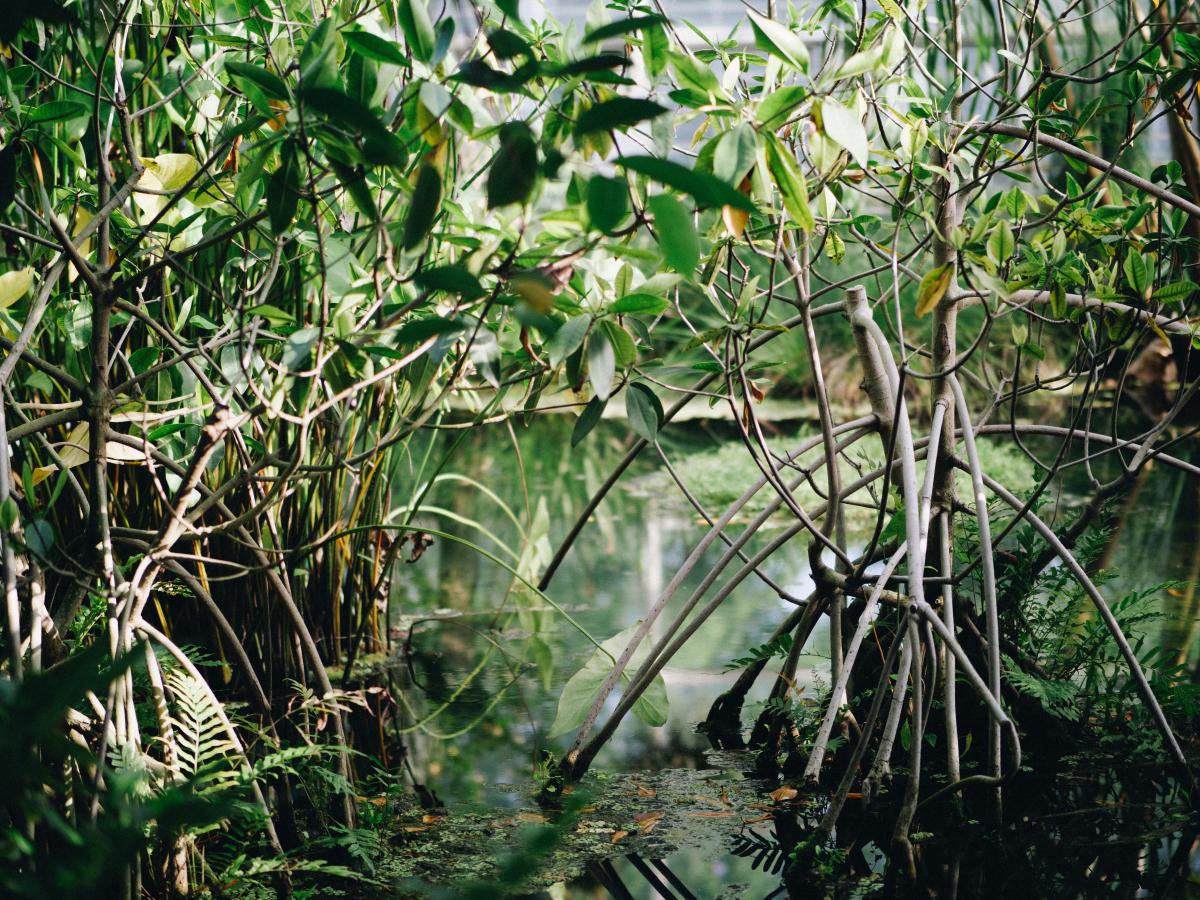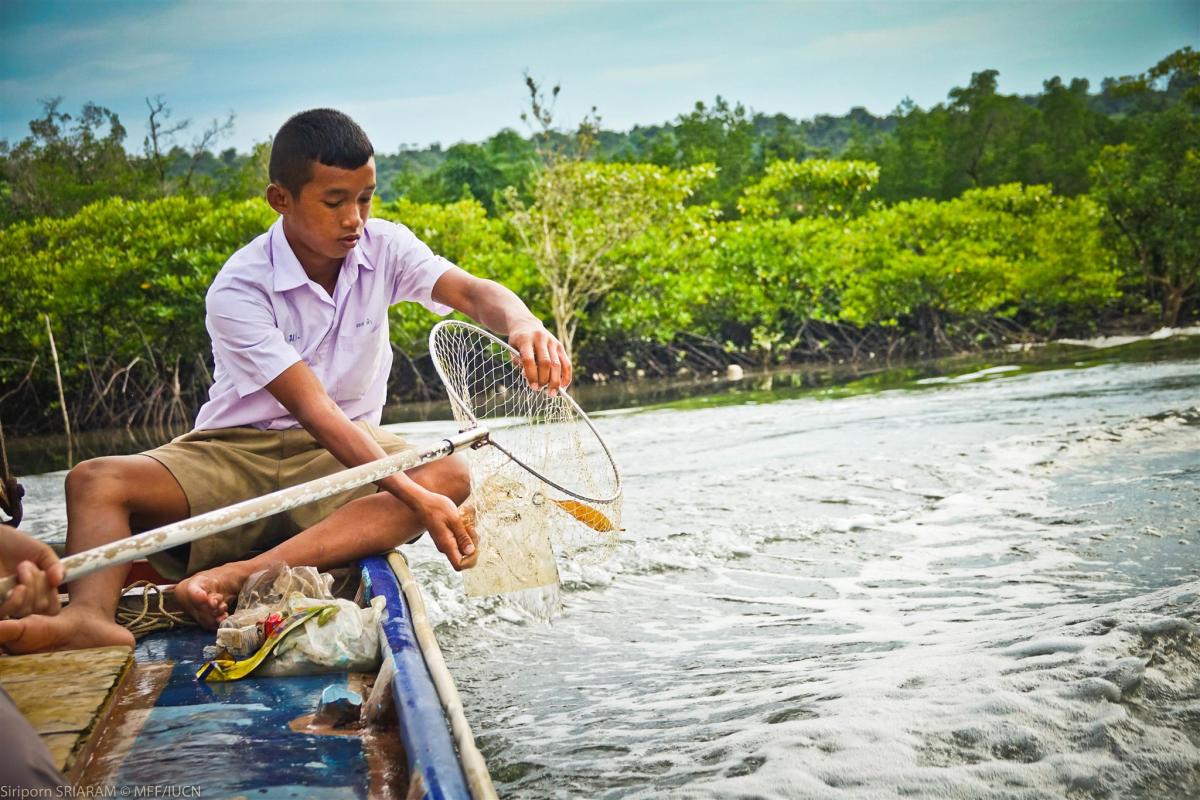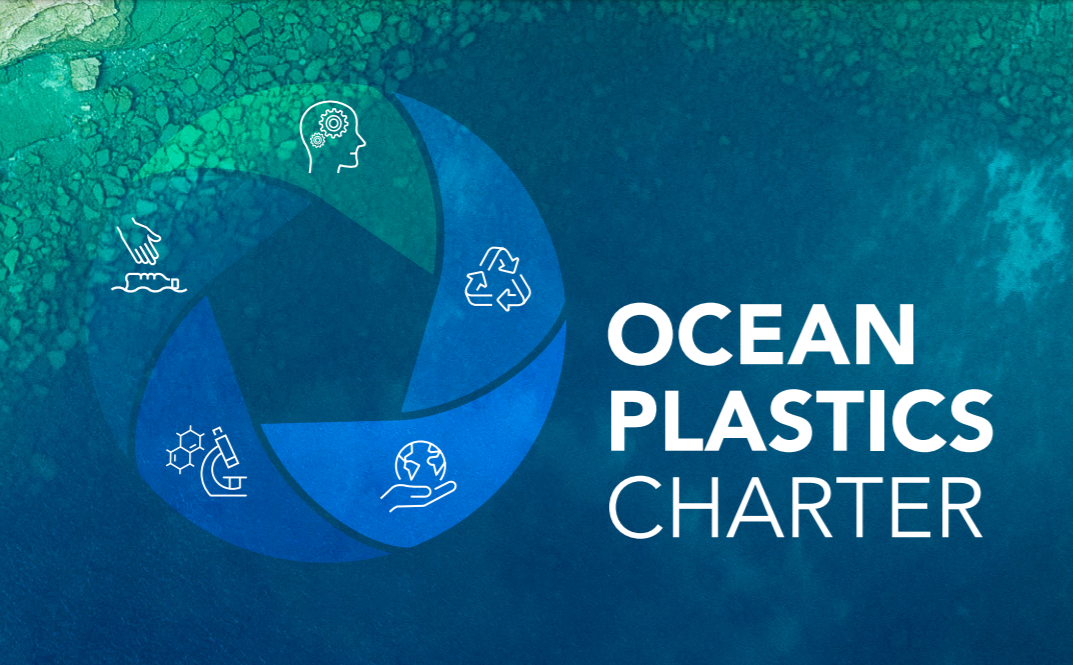A gender specialist’s view of responsive forest landscape restoration
Gender equity is a driving force for effective, equitable and sustainable environmental solutions. How do we ensure the forest landscape restoration and the restoration opportunity assessment methodology are gender responsive?
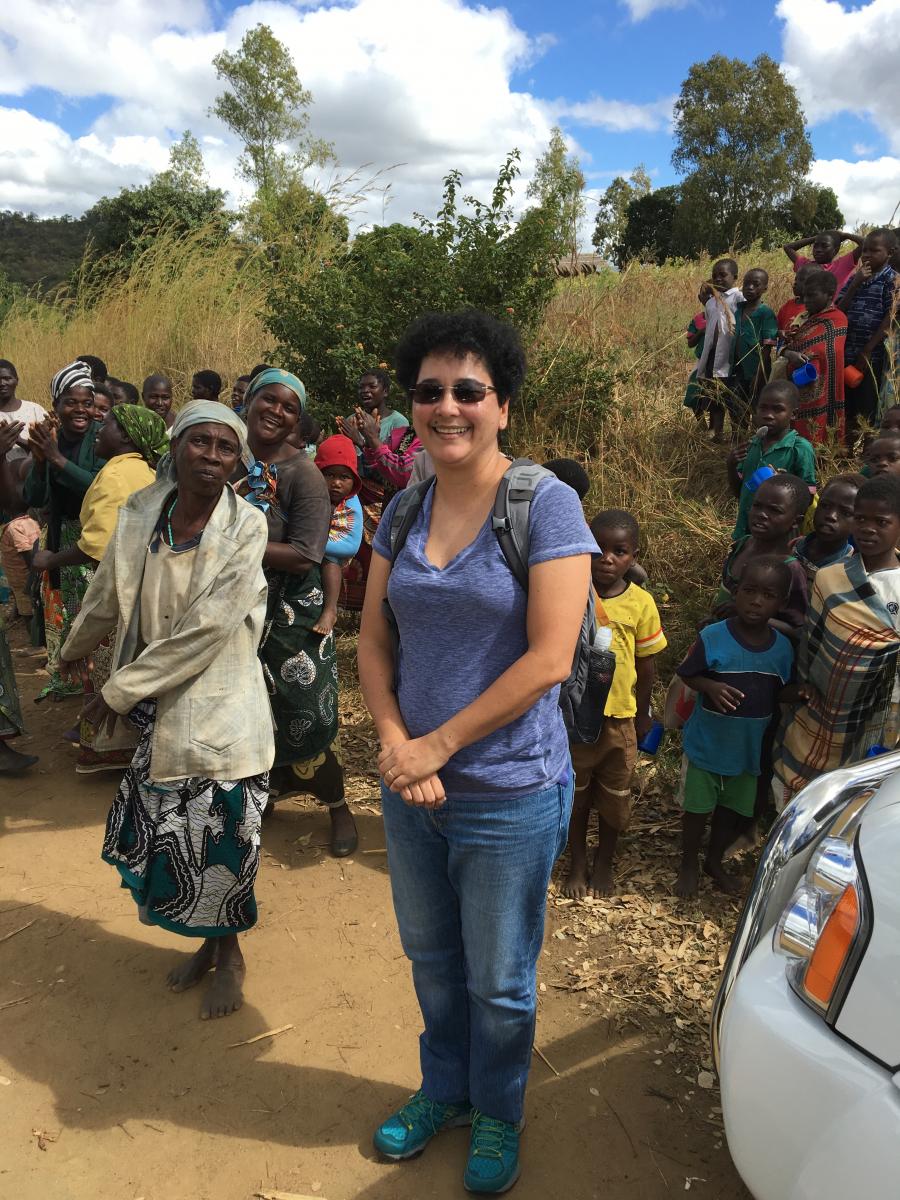
Photo: IUCN
Knowing that forest landscape restoration (FLR) opportunity assessments are stakeholder driven processes, the specific actions to ensure women and men fully participate in, and equally benefit from, FLR are imperative. We discussed ways to address and overcome gender gaps and biases and avoid reinforcing gender inequalities with Jackie Siles, Senior Gender Coordinator from the IUCN Global Gender Office.
Q. Why is it important to include women in planning and decision-making processes such as FLR opportunity assessments?
FLR opportunity assessments require a participatory and multi-sector approach. It’s essential to include women in the assessment process and in the development of restoration plans because as stakeholders, women have the right to fully participate in decision-making processes. Excluding women would mean disregarding half of the population. When we consult women and women’s groups on landscape management, it becomes clear that women depend on natural resources for a variety of uses. Women have knowledge, experiences, interests and ideas on natural resources use and management but face different constraints than men in the access and control of these resources. Gathering this information during the application of the restoration opportunities assessment methodology (ROAM) allows us to provide better recommendations in the FLR assessments.
For effective FLR implementation, actions have to respond to people’s needs. FLR also has to respond to the development objectives of the country. In the case of Malawi, where a gender approach has been integrated since the very beginning of the assessment process, FLR opportunities were identified with the highest value and priority for enhanced food security, biodiversity and resilience. From the beginning of the gender analysis we were able to see the link between the forest, farm and household activities of women with natural resources – and how restoration actions could have an impact on them. Also, we realized that the poorest areas of the country, where restoration would take place, are also the areas where single mothers are heads of family households. These women are in charge of running their homes and their farms. They are less educated than men from the same area, have less access to land and technical support for their farming activities, and have less access to subsidies and programmes for food production. Now knowing the diverse needs of these households, we need to adjust our action plans and information and capacity packages on FLR and ROAM that we will bring to these villages. We need to adjust our approach in response to these needs.
During the assessment process, when we included the socio-economic variables and mapped them accordingly, we can clearly see the inequities. These types of analyses on gender gaps are essential to understand those dynamics, which can be very different from a country to another. It is crucial to take into account this reality during the development of the FLR strategy – to make sure the proposed actions will be sustainable. We certainly don’t want FLR to contribute to gender inequities. FLR can reduce gender gaps; to do so, women have to be on board. Just as men are, women are active agents of forest landscape restoration implementation.
Q. How are gender inequities reflected in the day-to-day life of women?
Inequities exist at different levels. Inequity may exist in regards to access to natural resources, to information, to capacity building activities, to technologies, to finance, among many others. In many countries of Africa, Asia and Latin America where ROAM is applied, women are facing cultural barriers towards their participation in various activities related to natural resources management. The traditional, institutional and social barriers women face in some cultures may limit their capacity for engagement. Women tend to be expected to be in charge of household chores and childcare, which in return limits their access to paid employment and training activities. In addition, unlike men, land ownership barriers restrict women’s access to credit and development programmes.
There may be inequity in access to decision making mechanisms. In light of the barriers already mentioned, women may not raise their voices and share their insights as easily as the men of their communities – and priority may also be given to men’s opinions. Inequity may also be reflected in access to benefits. If women’s needs are not taken into account during the selection of tree species for restoration, for instance, benefits from restored landscapes won’t be fairly distributed among men and women. During the application of ROAM in the Yucatan Peninsula in Mexico, we separately asked men and women to name tree species important for their activities. Each group named around 40 species but only a few species overlapped between the two. Women identified species not mentioned by the male group. If women weren’t asked, we would have missed the species important to them.
In many African countries where FLR opportunity assessments are conducted, such as Malawi, Burundi, Rwanda and Mozambique, women generally don’t own the land, nor the trees, but they own the fruits.
In Malawi, when discussions around FLR interventions started, the stakeholders involved -primarily men- identified timber as the main focus of the restoration efforts. While Moringa (Moringa oleifera), for example, is very important to women for its medicinal and nutritional virtues, it is less likely to be prioritised by men. Such differentiated needs must be considered in the process to ensure that restoration strategies will generate outcomes that will reflect the needs and produce benefits for both women and men equitably.
Q. What is the risk of not addressing those inequities with ROAM and FLR – of continuing with ‘business as usual’?
We risk having projects and programmes that are not gender responsive and won’t achieve the countries’ FLR objectives, nor their development objectives. For example, how will we reduce fuelwood consumption without involving women in the process – knowing that in many countries of Africa, Asia and Latin America the majority of households depend on fuelwood for cooking, and women are the ones in charge of its collection and use?
Ignoring gender considerations in FLR opportunity assessment processes would reinforce those social gaps by generating an inaccurate identification of the primary stakeholders in forests, forest management and agricultural practices; by contributing to the establishment of inequitable systems for benefit sharing; and by contributing to the marginalisation of women in decision-making.
Both men and women are connected differently with natural resources, based on their activities and roles. Both, women and men can bring a lot of knowledge and insight to the process since they have different needs, knowledge, ideas, and experiences. We would miss half of this knowledge, by not involving both genders.
Q. How can we ensure ROAM and FLR are gender responsive and will help to reduce these inequities?
The very first thing we need to do is to identify the gender gaps related to natural resources and restoration processes. To do so, it is crucial to conduct a gender analysis in the country or sub-region where we want to implement FLR, and gather all the relevant information and socio-economic data to understand the reality peculiar to each location. In this analysis, we need to include the legal and institutional frameworks related to women’s rights and the country’s commitments to global/national environment and development goals. We also need to include customary laws and cultural considerations since they can have a direct impact on how people are using the resources in the country.
In many assessment processes, we create local focus groups among female and male stakeholders from communities and local organisations to validate the gathered information as part of the gender analysis, and to raise awareness around gender inequities. From the beginning, we include gender focal points from across sectors related to FLR (normally composed of ministries of environment, forests, and agriculture; plus the ministry in charge of women) to facilitate data collection during the gender analysis, and to ensure that the FLR strategy developed will contribute to the reduction of gender gaps. There are many ways in which gender focal points from governmental institutions can be involved. They can be part of the technical task force conducting the FLR opportunities assessment, the national or subnational roundtables on FLR or the gender committees created in some countries as part of the national or subnational networks for FLR. Participation is also open to other women’s groups, organisations and academia.
We need people who are well informed on gender inequalities and bias. It is crucial to work with people who acknowledge that gender gaps exist, who acknowledge that we need to make structural changes to reduce these inequities, and who are ready to fight for women’s rights. We need to raise awareness around gender inequities by conducting capacity building activities with the FLR opportunities assessment team, stakeholders involved in the roundtable and with smallholders at the local level.
We need to take into account that each person participating in the project/programme or assessment process who represents producers, a local organization, an NGO, the private sector or IUCN, arrives with their own perspectives and experiences. We create an enabling environment during the capacity building workshops where the participants have the opportunity to learn about gender responsive FLR. This process helps us to promote a multidisciplinary approach by integrating social and environmental fields. We need to valorise social aspects of conservation, environment and forestry if we want to find sustainable solutions to the many challenges we face.
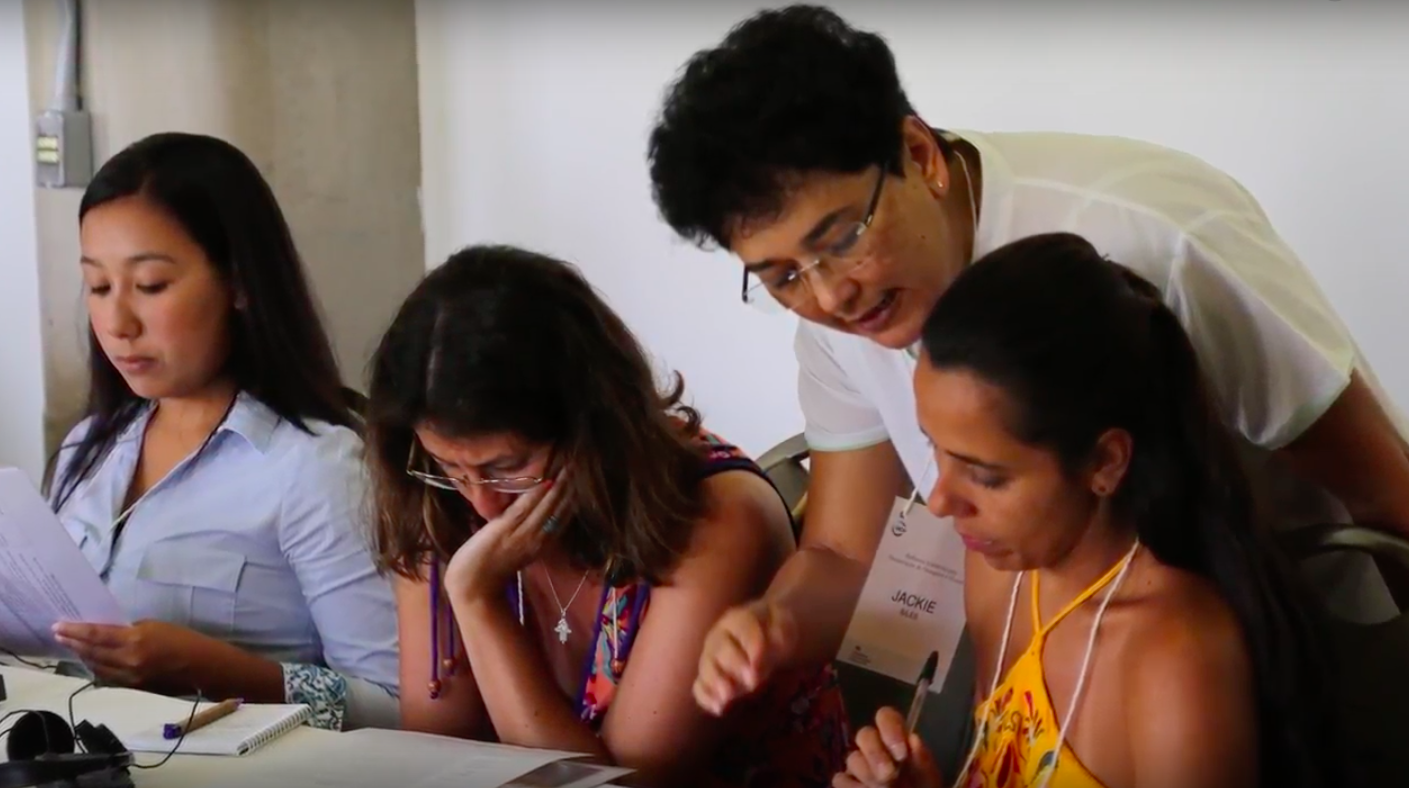 Photo: IUCN
Photo: IUCN
To assist countries in identifying opportunities for gender responsive FLR at a national or sub-national level, IUCN developed the Gender Responsive Restoration Guidelines: A closer look at gender in the Restoration Opportunities Assessment Methodology. The guidelines ensure that the application of ROAM and FLR implementation, including any policy uptake and land-use planning, are gender responsive.
Q. Can you share some examples of FLR opportunity assessment processes where a gender responsive approach has been adopted?
Each ROAM process is unique. There are many ways we can support assessment teams with gender responsive implementation. In Malawi, the IUCN Global Gender Office has been involved since the beginning of the ROAM application. We accompanied the assessment team in every phase of ROAM, ensuring gender considerations were taken into account during the stakeholder mobilisation, the socio-economic-environmental data collection, the spatial analyses, economic analysis, gender analysis, the validation of the results and the creation of the gender responsive recommendations. This stakeholder driven process resulted in a gender responsive FLR strategy for the country – which is a stunning output!
In Brazil, IUCN worked with partners in the subnational ROAM processes implemented in four states. We developed an analysis of enabling conditions for FLR, a gender action plan for each ROAM phase and the ‘gender golden rules’ to follow during the process. The Atlantic Forest Restoration Pact (PACTO), a Brazilian organisation involved in the ROAM process which has created a monitoring protocol for the Mata Atlantica region, integrated gender indicators into its monitoring tool. In addition, PACTO, with IUCN support, provided a series of training modules on gender equity and inclusion of gender in capacity building activities in the country. Furthermore, with the technical support of IUCN, the government of Brazil reviewed its National Biodiversity Strategy and Action Plan (NBSAP) and integrated 37 specific gender considerations. This effort also led to the creation of a permanent working group on gender issues within PainelBio, the Brazilian Panel on Biodiversity.
In Honduras, workshops have been held with women from indigenous communities, farmers’ organisations, governmental and non-governmental organisations, the private sector and academia. The workshops were on the potential of FLR and the ROAM processes in their country. And were set up to validate proposed restoration actions and raise awareness on the importance of integrating a gender-responsive approach to this process. Moreover, a women’s commission has been created to represent women’s interests at discussion and decision-making roundtables on restoration actions.
To give one last example, in Mexico, capacity building workshops were held as part of the implementation of two sub-national FLR strategies. The first was in Chiapas and the other in the Yucatan Peninsula (comprised of the states of Campeche, Quintana Roo and Yucatan). The workshops were organised to integrate the voices of women representatives of micro and small enterprises who are currently developing activities that can contribute to restoring rural landscapes whilst benefiting their own organisations through FLR.
Q. What are the next steps to reduce gender gaps in FLR?
The challenge is the implementation – moving from a strategy to actions on the ground through projects and programmes. We need to be creative and innovative to develop gender responsive methodologies to support women in capacity building activities, to reinforce women’s organisations, to raise awareness of the different stakeholders around gender inequities, to sensitise men about the importance of women’s participation and to adapt value chains related to FLR products to make them gender responsive. And we definitely need to include indigenous women as well. These are some of the activities we should start thinking of and integrate in our action plans.
We need to develop champions on gender and FLR within the different governmental structures to make sure gender gaps will be addressed in agendas across different sectors. If we want to achieve the global restoration targets and objectives and contribute to global development goals at the same time, we need to acknowledge gender inequities and join efforts to eliminate them.
